The Louvre is the world’s most-visited museum and the reason is that it’s home to one of the most impressive art collections. Just about all the most famous artists in history have artworks on display here.
The history of the building called the Louvre palace dates back to the late 12th century, a time when King Philip II of France decided to build a fortress on the Right Bank of the Seine River.
This fortress was expanded multiple times and ended up becoming the main residence of the Kings of France under Francis I in 1546. King Louis XIV eventually moved to the exuberant Palace of Versailles in 1692.
The Louvre Museum was established shortly following the start of the French Revolution and it opened its doors for the first time on August 10, 1793. The late-18th-century collection of just 537 items has grown to a massive collection of over 615,000 works of art today.
35,000 artworks, of which over 7,500 are paintings and over 6,500 sculptures are on permanent display. We have chosen 10 of the most famous paintings at the Louvre that you simply have to see during your visit.
1. Mona Lisa – Leonardo da Vinci
- Date Created: 1503-1506
- Dimensions: 77 × 53 centimeters (30 × 21 inches)
The Mona Lisa isn’t just one of the most famous paintings at the Louvre but arguably one of the most famous paintings in the entire world.
This masterpiece by Italian polymath Leonard da Vinci has captured our imagination for many centuries since the Italian Renaissance virtuoso painted it in the early 16th century. He probably never completed it, yet it’s by far the most captivating work in his oeuvre.
Read more on Art Facts: 36 facts about the Mona Lisa Painting
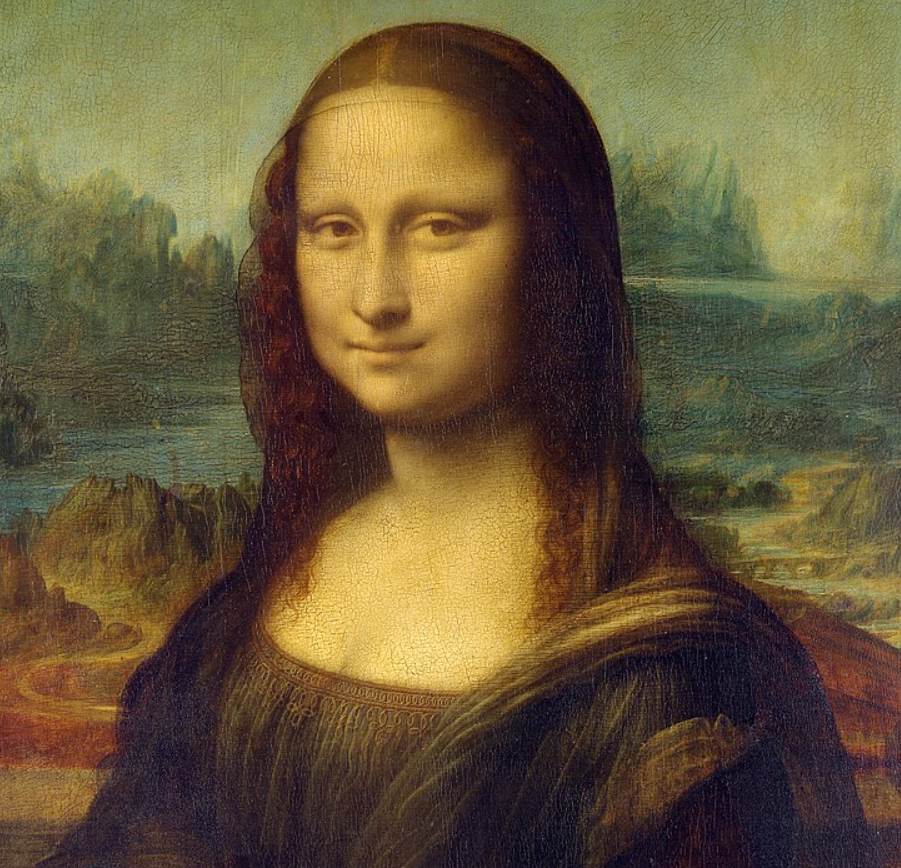
2. Liberty Leading the People – Eugène Delacroix
- Date Created: 1830
- Dimensions: 260 × 325 centimeters (102.4 × 128.0 inches)
Liberty Leading the People is the ultimate masterpiece of Romantic artist and leader of the French Romantic School, Eugène Delacroix.
It’s a work that commemorates the July Revolution of 1830, an event that toppled the monarchy once more, similar to the first French Revolution of the late 18th-century. The main character is a semi-naked woman who holds the French Tricolour, a flag that became the flag of France after these events.
Read more on Art Facts: 12 Facts about Liberty Leading the People
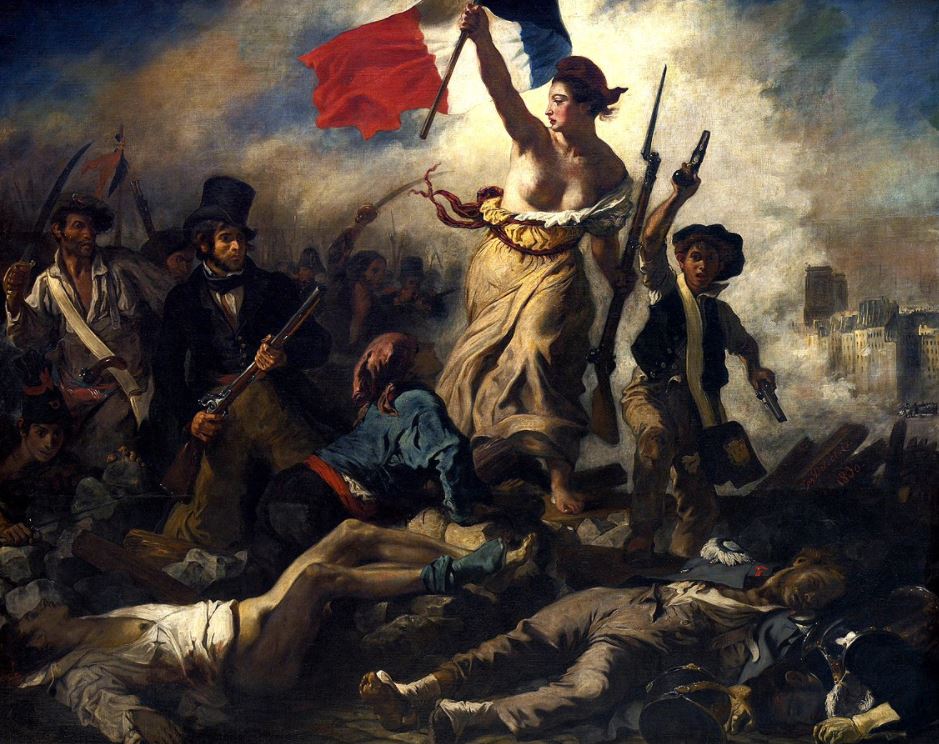
3. The Wedding at Cana – Paolo Veronese
- Date Created: 1563
- Dimensions: 6.77 × 9.94 meters (267 × 391 inches)
The Wedding at Cana is located in the same room as the Mona Lisa and is therefore sometimes overlooked by tourists. It’s hard to miss this epic work of art, though, just for its sheer size alone.
It’s considered to be the epitome of the famous paintings of Paolo Veronese, a Mannerist artist of the Venetian School who created numerous works of art of monumental scale.
Read more on Art Facts: 12 facts about The Wedding at Cana

4. Oath of the Horatii – Jacques-Louis David
- Date Created: 1784
- Dimensions: 329.8 × 424.8 centimeters (129.8 × 167.2 inches)
Oath of the Horatii is considered to be one of the most renowned Neoclassical paintings in history, created by one of the leading Neoclassical artists of his time Jacques-Louis David.
It depicts three brothers from Rome the moment they will engage in battle with 3 warriors from the city of Alba Longa. They salute their father just before 2 of them will die in combat. This mythical tale apparently took place in the 7th century B.C. and is one David’s great masterpieces.
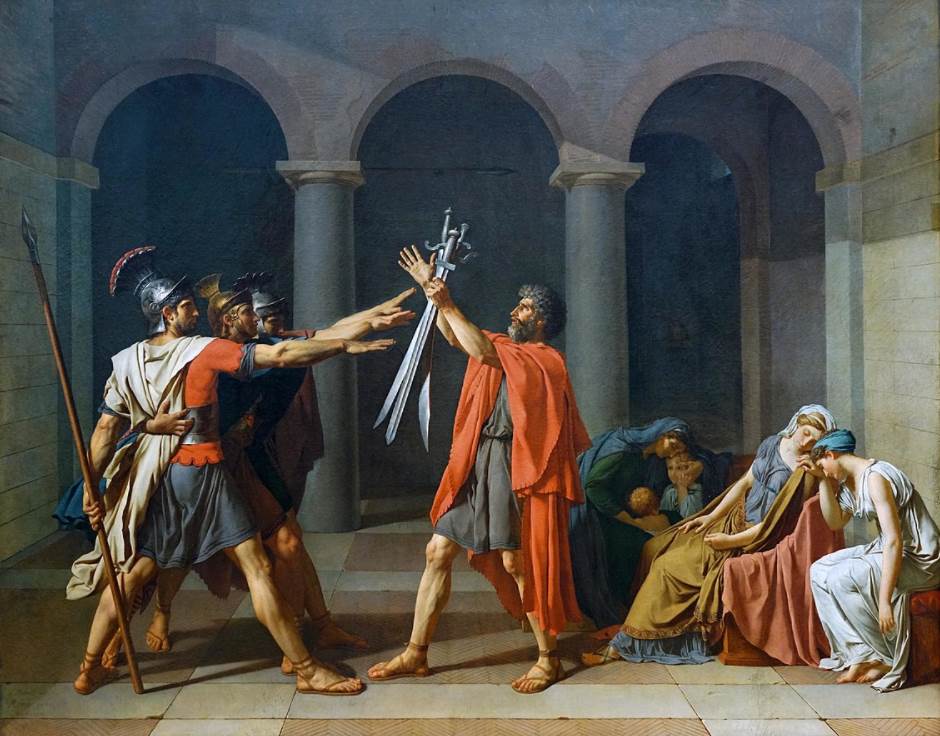
5. The Raft of the Medusa – Théodore Géricault
- Date Created: 1818-1819
- Dimensions: 490 × 716 centimeters (16 feet 1 inch × 23 feet 6 inches)
The Raft of the Medusa can easily be described as one of the most defining paintings of the first half of the 19th century. The career of French Romantic painter Théodore Géricault (1791-1824) was unfortunately cut way short due to illness.
This masterpiece, however, inspired his friend and colleague Eugène Delacroix to take over his role as the pioneer of the Romantic art movement. This means that it formed the bridge between the Neoclassical and Romantic movements.
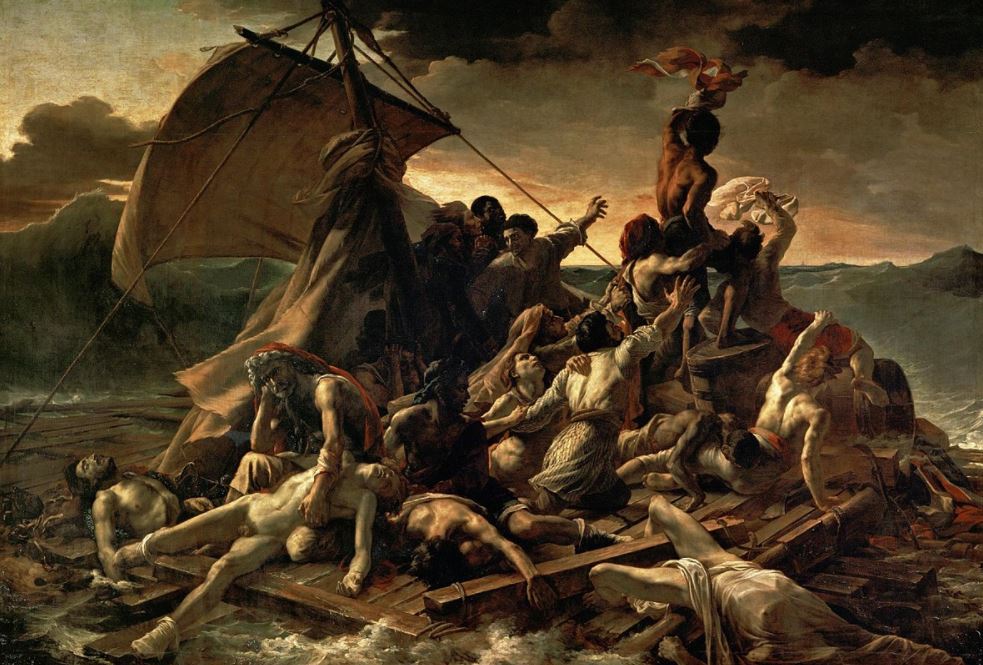
6. The Lacemaker – Johannes Vermeer
- Date Created: 1669-1670
- Dimensions: 24.5 × 21 centimeters (9.6 × 8.3 inches)
The Lacemaker is not only the smallest painting in our list with the most famous paintings at the Louvre Museum but also the smallest work in the oeuvre of Dutch Golden Age artist of the Baroque period Johannes Vermeer.
Vermeer became world-famous with his work called “Girl with a Pearl Earring” and is known for his delicate little works of art depicting people in ordinary domestic scenes. Many of his works depict women as they are doing household tasks, including this remarkably focused masterpiece.
Read more on Art Facts: 10 Facts about The Lacemaker

7. The Coronation of Napoleon – Jacques-Louis David
- Date Created: 1805-1807
- Dimensions: 6.21 × 9.79 meters (20 feet 4 inches × 32 feet 1 inch)
The Coronation of Napoleon is another work by French Neoclassical painter Jacques-Louis David. It’s included in this list of famous paintings at the Louvre because it depicts the man after who the museum was briefly named following this event.
That’s right, for a brief period in the early 19th century, the Louvre was actually renamed “Musée Napoléon.” It was renamed the Louvre following the abdication of Napoleon over a decade later.
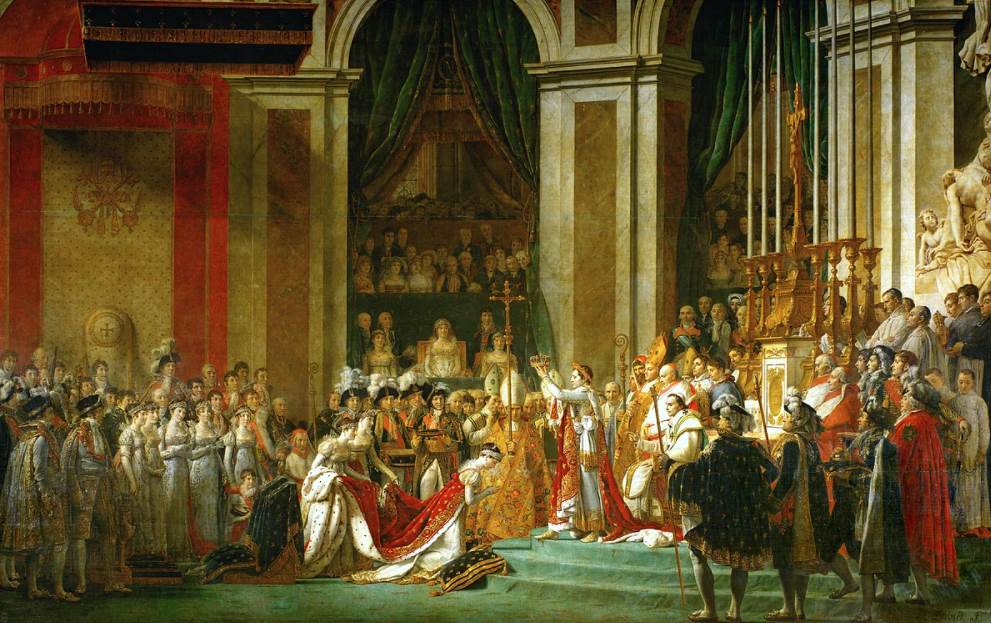
8. Madonna of Chancellor Rolin – Jan van Eyck
- Date Created: 1435
- Dimensions: 66 x 62 centimeters (2.16 x 2.03 feet)
The Madonna of Chancellor Rolin is a work created by Early Netherlandish painter, also known as the “Flemish Primitives,” Jan van Eyck. It’s a remarkable work of art in the sense that the man who commissioned it is depicted in it.
Nicholas Rolin was about 60 years of age when this painting was created and he was the Chancellor of the Duchy of Burgundy. Jan van Eyck was the court painter of the Duke of Burgundy at the time, Phillip the Good.
Read more on Art Facts: 10 facts about the Madonna of Chancellor Rolin
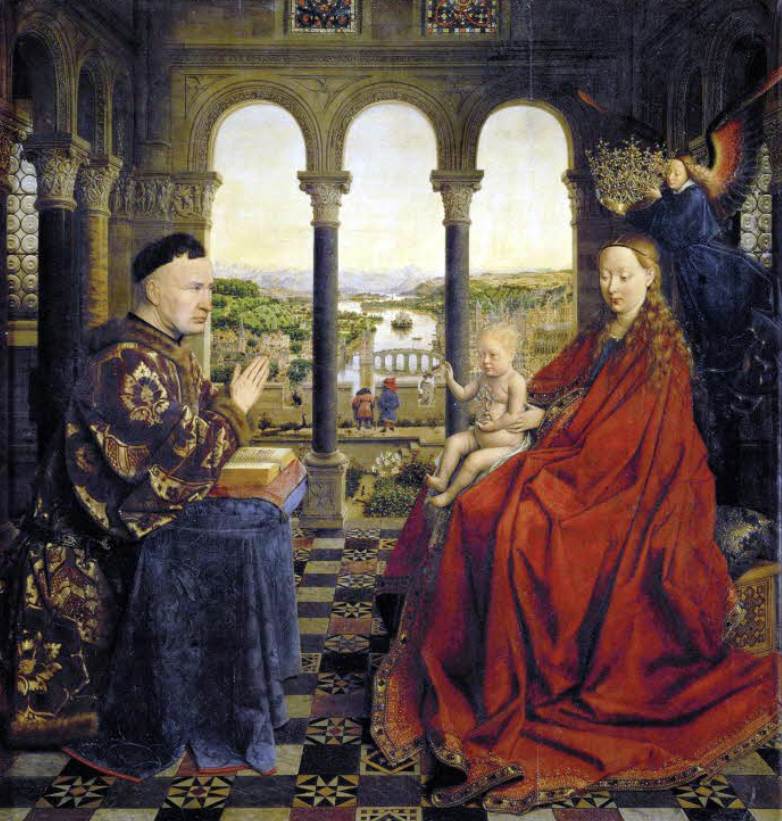
9. The Arrival of Marie de Medici at Marseille – Peter Paul Rubens
- Date Created: 1622-1625
- Dimensions: 394 x 295 centimeters (155 x 116 inches)
The Arrival of Marie de Medici at Marseille or “The Disembarkation at Marseilles” is one of the 24 paintings that make up the so-called Marie de Medici cycle. These are some of the most remarkable works in the oeuvre of Flemish Baroque painter Peter Paul Rubens.
This particular painting depicts the triumphal arrival of Marie de Medici, the future Queen of France, at Marseille on November 3, 1600. The painting features the distinctive style of Rubens full of drama and voluptuous female nudity.
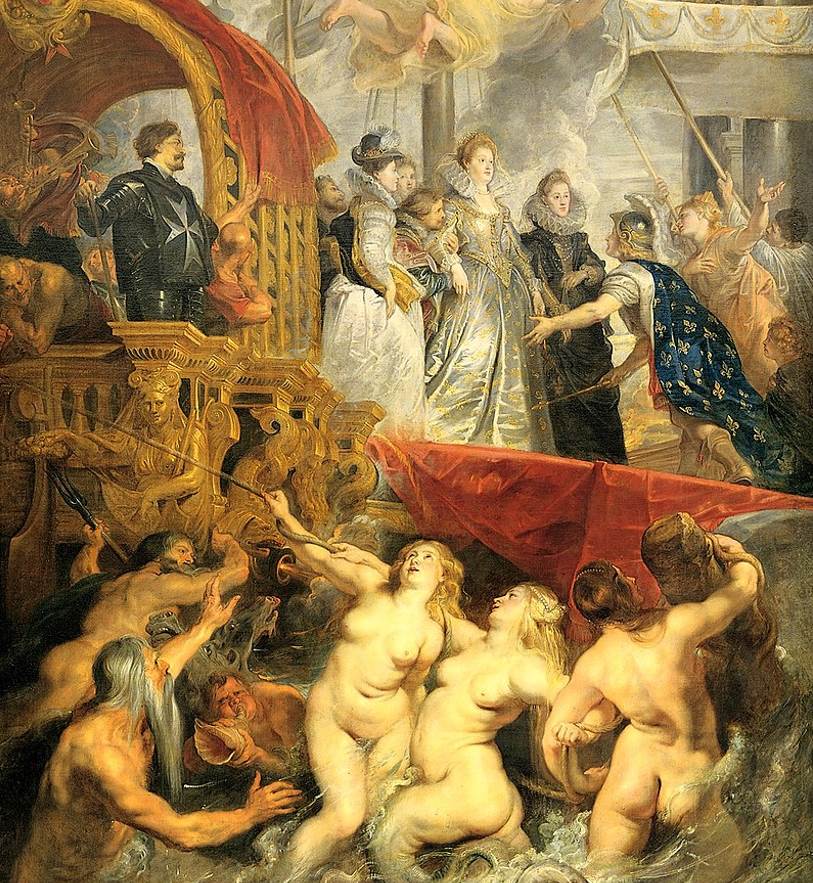
10. La belle jardinière – Raphael
- Date Created: 1507-1508
- Dimensions: 122 × 80 centimeters (48 × 31.5 inches)
La Belle Jardinière is also sometimes referred to as “Madonna and Child with Saint John the Baptist,” a title that pretty much explains who is depicted.
It’s one of the multiple paintings of Raphael depicting Madonna’s during his Florentine period in the early 16th century before his move to Rome, and this is considered to be one of his finest.
Read more on Art Facts: 10 facts about la Belle Jardinière



